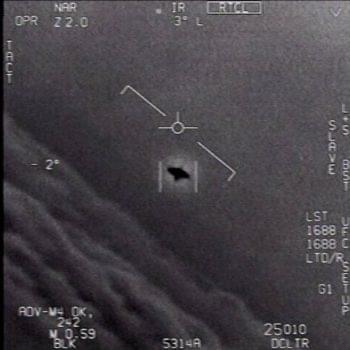Recent investments could position Massachusetts as a leader in this transformative technology, according to Northeastern Global News.




A release today of the Department of Defense annual report on Unidentified Anomalous Phenomena (UAP) comes one day after a witness-based Congressional hearing on the topic.
The All-domain Anomaly Resolution Office’s Annual Report on Unidentified Anomalous Phenomena is required by the National Defense Authorization Act (NDAA) for Fiscal Year 2022, as amended by the NDAA for Fiscal Year 2023.
“Analyzing and understanding the potential threats posed by UAP is an ongoing collaborative effort involving many departments and agencies,” said a DoD statement.

To determine the type and severity of a cancer, pathologists typically analyze thin slices of a tumor biopsy under a microscope. But to figure out what genomic changes are driving the tumor’s growth—information that can guide how it is treated—scientists must perform genetic sequencing of the RNA isolated from the tumor, a process that can take weeks and costs thousands of dollars.
Now, Stanford Medicine researchers have developed an artificial intelligence-powered computational program that can predict the activity of thousands of genes within tumor cells based only on standard microscopy images of the biopsy.
The tool, described online in Nature Communications Nov. 14, was created using data from more than 7,000 diverse tumor samples. The team showed that it could use routinely collected biopsy images to predict genetic variations in breast cancers and to predict patient outcomes.

Six US banks are reporting potential security breaches of debit cards, with several forcing affected customers to get replacements.
In new filings with the Massachusetts state government, Mainstreet Bank, Savers Bank, The Village Bank, Watertown Savings Bank, Webster Five Cents Savings Bank and Eagle Bank say some debit cards may have been compromised following a security breach of a merchant’s payment card platform.
A copy of a notice sent to Eagle Bank customers was recently posted on the government site, stating an unnamed Mastercard merchant allowed unauthorized access to account information.

The Semperis Hybrid Identity Protection conference kicked off today in New Orleans, gathering identity security experts, practitioners, and thought leaders to explore the evolving world of hybrid identity. This year’s conference, more relevant than ever, highlights a fundamental shift in how organizations approach identity—not just as a tool for managing user access but as a critical layer of cybersecurity that shapes an organization’s defensive posture. In an era of remote work, cloud adoption, and advanced cyber threats, identity has become the new perimeter, making events like HIP essential for fostering innovation, resilience, and collective knowledge in the industry.
Historically, identity management was an IT utility—a straightforward way to grant employees access to necessary resources. However, as digital transformations swept through organizations, the role of identity shifted dramatically. Identity is now central to security strategies, especially with the explosion of SaaS applications, remote access, and mobile workforces. For many organizations, identity is not just about provisioning accounts; it’s the first and last line of defense against unauthorized access and data breaches.
This transition has led to a realignment within organizations, where identity management is increasingly overseen by CISOs rather than traditional IT teams. CISOs recognize that identity management is a security function with direct implications on risk mitigation, compliance, and resilience.

For the first time, researchers have observed how bromoform rearranges its atoms in less than a trillionth of a second after it gets hit by an ultraviolet pulse. The imaging technique captured a long-predicted pathway by which the ozone-layer-damaging molecule transforms its structure upon interaction with light.

OneSkin, founded by Brazilian PhD scientists in 2016, reports that it has now closed a Series A funding round led by Selva Ventures, together with contributions from PLUS Capital, Unilever Ventures, Able Partners, SOSV, and Meta Planet. This brings the accumulated capital of the firm to 20 million US dollars.
The goal of the OneSkin team is the research and development of topical treatments that promote skin longevity. The brand’s efforts have led to the development of the peptide OS-01, which is claimed to reverse the aging of the skin by preventing the accumulation of “old”, non-dividing senescent cells, as well as shield skin cells from DNA damage. OS-01 is already available on the market in several different products offered by the company.
Senescent cells have been the focus of a significant amount of biogerontological research in recent years. Scientists claim that every cell in the human body has a limited capacity for division, governed by genetic factors. When the cells reach the point in their lifecycle where their ability to divide is permanently halted, they remain in a minimally-functional state in the tissue types they inhabit.
In a podcast on Monday, Anthropic CEO Dario Amodei warned that a future with human-level AIs is not far away. In fact, it might happen as soon as 2026.
The podcast was hosted by AI influencer Lex Fridman where Amodei was invited for an interview that went on for 5 hours. A lot of interesting topics were discussed, starting from Anthropic’s upcoming project to the timeline for superintelligent models and so on.
Note: Human-level AIs basically refer to Artificial General Intelligence (AGI) which many companies like OpenAI are already working on. AGI is a new state in which an AI model will be as competent as a human in every field.
